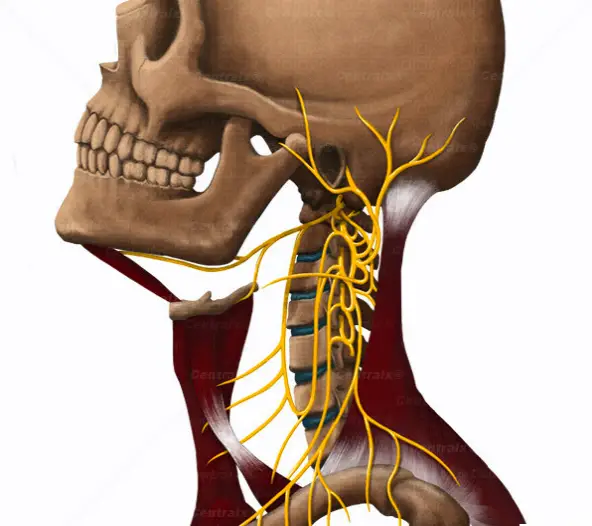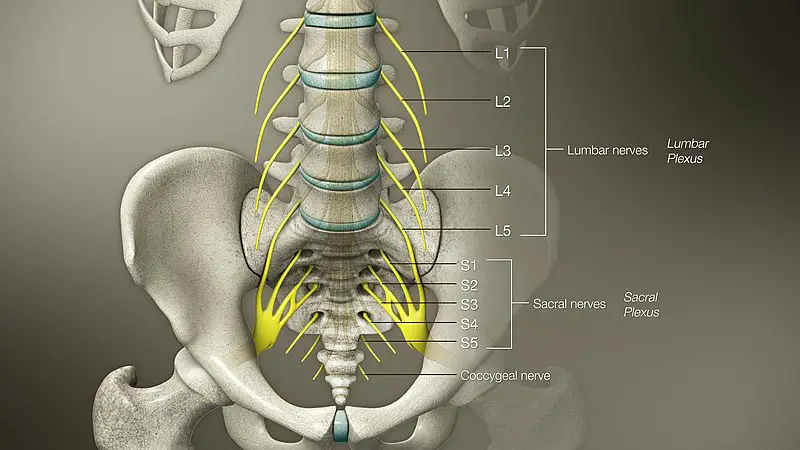Article reviewed and approved by Dr. Ibtissama Boukas, physician specializing in family medicine
The cervical plexus is a network of nerve fibers that provides the neck and trunk with feeling and movement. In this article, we cover the anatomy of the cervical plexus, its sensory and motor role, and some clinical applications.
Definition and anatomy
To understand the lumbar plexus (also called the lumbar plexus), it is necessary to know the anatomy of the spine, vertebrae which compose it, spinal cord and spinal nerves emerging from it.
Let's start with the spinal nerves (also called spinal nerves). After originating from the spinal cord, they pass through the intervertebral foramen of their vertebrate corresponding. Each nerve then divides into anterior (or ventral branch) and posterior (or dorsal branch) nerve branches.
Spinal nerves C1 to C4 form the base of the cervical plexus. More specifically, the latter begins with the anterior branches of the C1, C2, C3 and C4 spinal nerves. These fibers combine with each other to form the branches of the cervical plexus.
It is located in the posterior triangle of the neck, midway up the sternocleidomastoid muscle, and in the prevertebral layer of the cervical fascia.
The cervical plexus then gives rise to many branches that innervate the head and neck regions. They can be divided into two groups: motor branches and sensory branches.
Motor branches
The motor branches of the cervical plexus are deeper in comparison with the sensory branches. As the name suggests, their role is to allow the movement of certain muscles of the neck, back and diaphragm. Here is a list of the motor nerves originating from the cervical plexus:
- Phrenic nerve (innervation of the diaphragm muscle, the main muscle responsible for the functioning of the respiratory system)
- Accessory phrenic nerves
- Cervical loop
- Other branches allowing the movement of certain muscles of the neck (including the scalene muscle)
Sensory branches
The sensory cutaneous branches of the cervical plexus innervate part of the skin integuments of the head, ear, neck, and thorax. Here is a list of the sensory nerves originating from the cervical plexus:
- greater auricular nerve
- Transverse nerve of the neck
- Lesser occipital nerve
- supraclavicular nerve
- Some contributions to the accessory nerve
Clinical implications
Cervical plexus block
The cervical plexus block is used in some neck surgeries to allow local anesthesia. For example, it is used for the following conditions:
- Thyroid surgeries (such as thyroidectomy)
- Carotid surgeries
- Clavicle fractures
- Cervical lymph node biopsies
- Cervical hernia (arthrodesis by anterior or lateral approach)
However, it is not used in the presence of associated respiratory or cardiac conditions.



